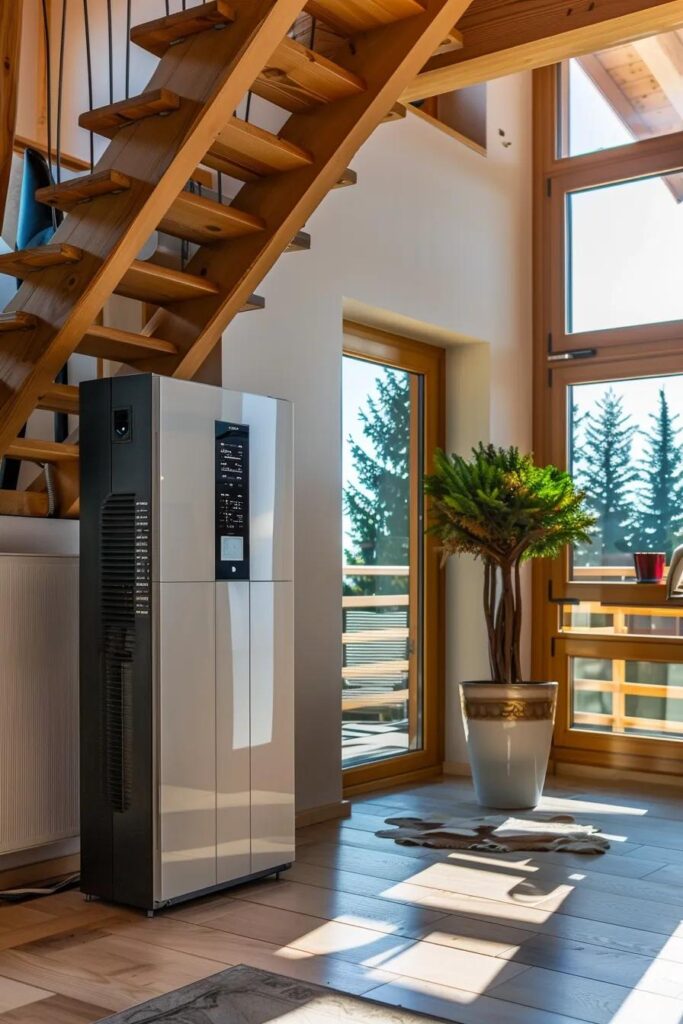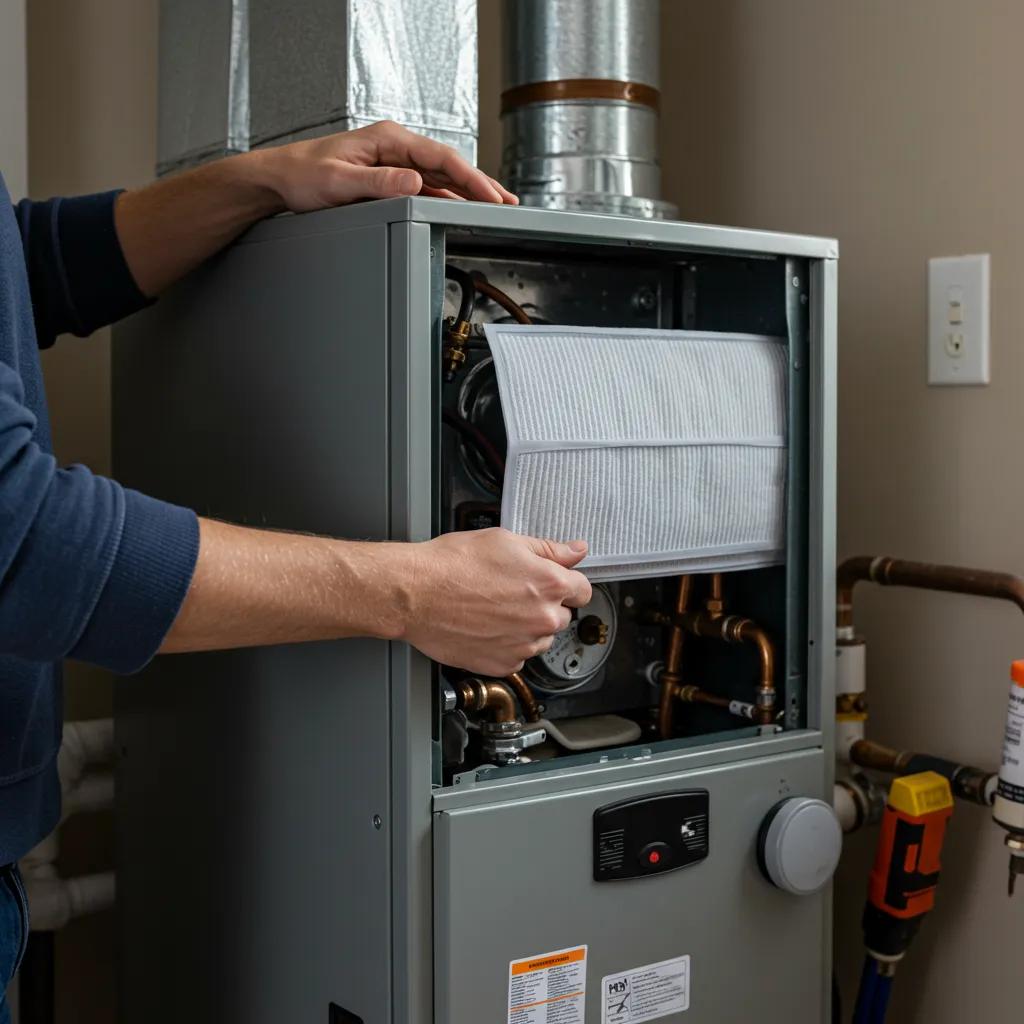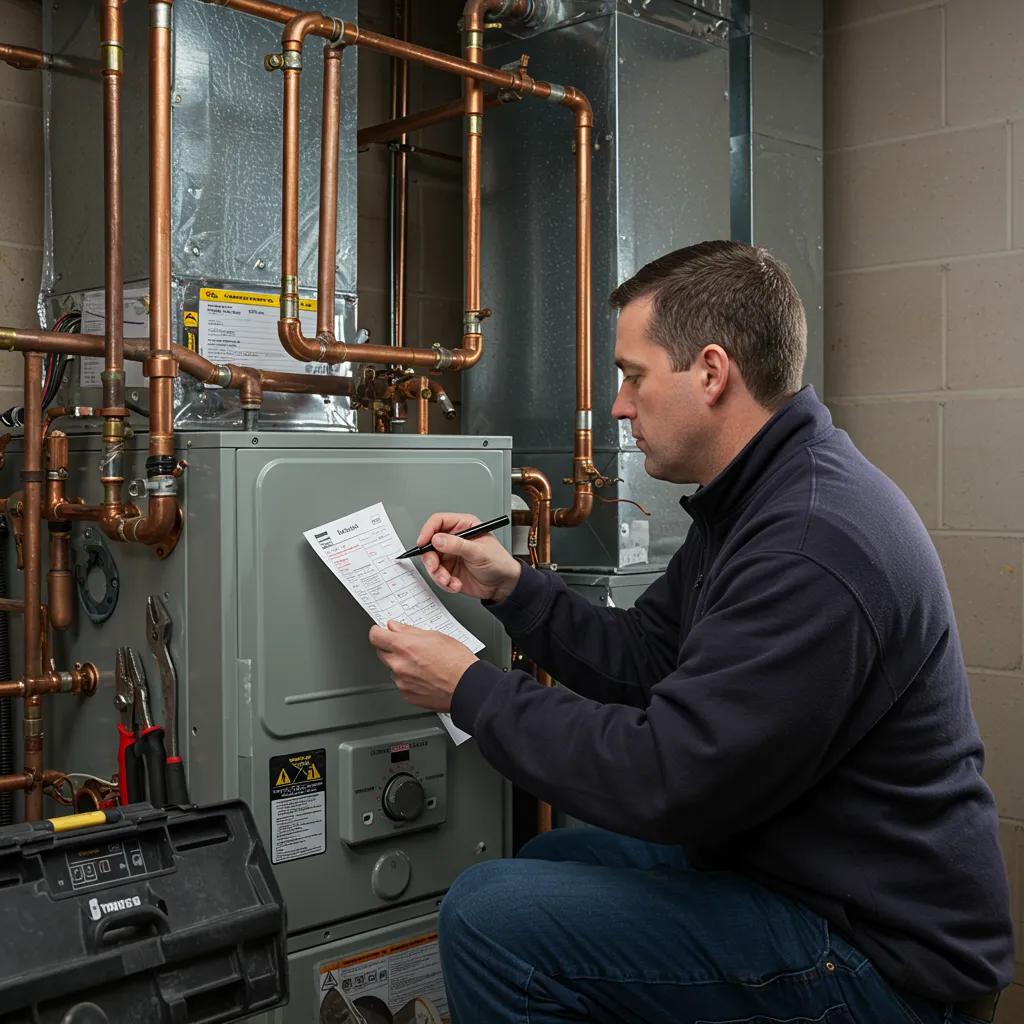
Maximize Your Furnace's Lifespan: Essential Maintenance and Efficiency Secrets
Did you know a well-cared-for natural gas furnace can keep your home warm and comfortable for 15 to 20 years? Extending your furnace’s life means avoiding costly premature replacements, enjoying lower energy bills, boosting your indoor comfort, and ensuring safer operation. This guide will walk you through why furnace longevity is so important, the key maintenance steps to keep your heating system running smoothly, efficiency upgrades that help it last longer, the tell-tale signs that signal repair or replacement needs, the advantages of professional furnace service right here in the Dallas-Fort Worth Metroplex, the benefits of annual tune-ups, and smart, budget-friendly care strategies. We’ve put together these insights specifically for homeowners and small business owners who are looking for dependable furnace service, furnace tune-ups, and furnace maintenance from a trusted local expert.
Why Does Extending Your Furnace’s Lifespan Matter So Much?
Giving your furnace a longer life protects your investment by delaying the expense of replacing it too soon, all while ensuring consistent warmth and safety. A heating system that lasts longer operates more efficiently, reduces unexpected downtime, and guards against major failures. Understanding these benefits is the first step toward embracing every furnace maintenance and efficiency tip we’ll cover in this article.
- Boosted energy efficiency means lower monthly heating bills.
- Consistent temperature control creates a more comfortable environment for everyone.
- Proactive care significantly lowers the risks of carbon monoxide leaks and fire hazards.
- Delaying replacement frees up your budget for other home improvements you’ve been dreaming of.
- Reliable system performance minimizes the need for emergency service calls.
These fundamental advantages clearly show why consistent upkeep and timely tune-ups are absolutely crucial for getting the most out of your furnace’s lifespan and performance.
How Do Furnace Longevity, Energy Bills, and Comfort Connect?
A furnace operating at its best uses less fuel while delivering steady heat, which directly translates to lower utility bills. When components like heat exchangers, burners, and ducts are clean and properly adjusted, airflow moves freely, preventing those annoying hot or cold spots in your living or working spaces. Better air distribution means even temperatures throughout every room, enhancing comfort without making the blower motor work overtime. For instance, simply swapping out a clogged air filter can restore up to 15 percent of lost efficiency, cutting down on gas usage and keeping your indoor warmth stable. Keeping your system efficient through regular service ensures its energy performance aligns perfectly with your comfort needs, paving the way for safer operation.
What Are the Safety Advantages of a Well-Maintained Furnace?
A furnace that receives regular maintenance significantly reduces the risk of dangerous situations by ensuring all combustion components function exactly as they should. Clean burners and correctly calibrated controls prevent incomplete fuel combustion, which is the primary cause of carbon monoxide production. Routine checks of flue vents and heat exchangers can spot cracks or blockages that might allow toxic gases to seep into your home. Furthermore, testing safety switches and flame sensors confirms that the system will operate reliably under all conditions. By making preventive maintenance a priority, homeowners and small business owners can protect their indoor air quality and minimize the chances of safety-related shutdowns that disrupt your comfort.
How Can Extending Your Furnace’s Life Save You Money?
Keeping your furnace running longer generates savings in several key ways: lower energy consumption, fewer emergency repairs, and deferred equipment replacement costs. Preventive maintenance visits typically cost a mere fraction of what a major component replacement or a full furnace swap would run. Over a 20-year service life, the cost of annual tune-ups and filter changes might add up to a few hundred dollars, whereas a mid-life burner replacement or heat exchanger repair could easily cost thousands. By investing in regular furnace service, furnace tune-ups, and furnace maintenance, property owners can avoid hefty repair bills and the significant capital outlay associated with purchasing brand-new systems.
What Are the Key Furnace Maintenance Tips to Keep It Running Longer?

Consistent, routine maintenance is the absolute cornerstone of extending your furnace’s lifespan. It addresses everyday wear and tear, prevents component failures, and keeps your system running efficiently. When these key practices are followed regularly, they ensure reliable heat delivery and protect your valuable heating investment. Professional service works hand-in-hand with the maintenance you do yourself, creating a complete and effective upkeep plan.
How Often Should You Swap Out Your Furnace Air Filter?
A clean air filter is essential for maintaining proper airflow, preventing dust buildup inside your furnace, and improving combustion efficiency. You should replace standard fiberglass or pleated filters every 1 to 3 months, depending on the filter’s MERV rating, your home’s indoor air quality, and how much you use your heating system. High-efficiency disposable filters often need changing monthly during peak heating seasons, while reusable electrostatic filters should be cleaned and inspected every 30 days.
| Filter Type | Replacement Interval | Performance Benefit |
|---|---|---|
| Fiberglass (MERV 1–4) | Every 1 month | Maintains basic airflow |
| Pleated (MERV 8–11) | Every 2–3 months | Improves air quality and flow |
| Electrostatic Reusable | Clean every 30 days | Long-term cost savings |
Consistently replacing your filter prevents unnecessary strain on the blower motor and ensures your furnace has clean air for combustion, setting the stage for successful professional furnace installation.
What Does a Professional Annual Furnace Tune-Up Involve?
A professional annual furnace tune-up is a comprehensive service that includes precise inspections, thorough cleaning of components, and system calibration to restore peak performance. Our certified technicians meticulously check safety controls, clean burners, inspect pilot or ignition systems, and lubricate all moving parts. They’ll measure gas pressure, test the integrity of the heat exchanger, and verify your thermostat is working accurately.
| Tune-Up Task | Frequency | Expected Benefit |
|---|---|---|
| Burner Cleaning | Annually | Optimizes fuel combustion |
| Heat Exchanger Inspection | Annually | Detects cracks to prevent leaks |
| Safety Control Testing | Annually | Ensures reliable shutdown mechanisms |
| Blower Motor Lubrication | Annually | Extends motor lifespan |
These detailed tasks help catch hidden inefficiencies and prevent costly breakdowns, ensuring your furnace is safer and lasts much longer.
How Do Regular Cleaning and Inspections Prevent Breakdowns?
Regular cleaning and inspections are your first line of defense, catching emerging issues before they become major problems and reducing unexpected downtime. Clearing away debris from burners and vents ensures uniform heat distribution, while checking electrical connections prevents shorts that could disable the blower motor. Inspecting belts and pulleys for signs of wear helps avoid sudden failures right in the middle of the heating season. Every preventive check can uncover minor faults—like loose wiring, worn belts, or clogged condensate drains—long before they trigger a complete system shutdown. This vigilant approach minimizes emergency service calls, supports smooth furnace operation, and guarantees uninterrupted warmth when you need it most.
What Simple DIY Furnace Care Steps Can Homeowners Take?
Homeowners can significantly boost their furnace’s longevity with simple, safe actions they can perform between professional visits. Follow these easy steps to help maintain your system’s health:
- Change or clean your air filter according to the recommended schedule to keep airflow optimal and efficiency high.
- Keep the area around your furnace clear of dust and debris, ensuring vents and registers have unobstructed airflow.
- Vacuum around the exterior of the blower cabinet and any accessible duct openings to minimize dust being drawn into the system.
- Check your thermostat’s batteries and settings seasonally to ensure accurate temperature control.
- Inspect visible duct connections for any gaps or leaks and seal them with metal-rated tape if necessary.
These straightforward tasks contribute to a cleaner, more efficient furnace, preparing it perfectly for expert maintenance.
How Can You Boost Furnace Efficiency to Extend Its Lifespan?
Improving your furnace’s efficiency reduces the operational strain on its key components and conserves fuel, both of which contribute directly to a longer service life. Efficiency upgrades often pay for themselves quickly through energy savings while also preserving the mechanical integrity of your system. Combining technological enhancements with proper system care is the best way to maximize your furnace’s longevity.
What Role Does a Programmable or Smart Thermostat Play?
A programmable or smart thermostat optimizes your furnace’s runtime by automatically adjusting temperature settings based on your household’s schedule and local weather conditions. By reducing heat output when no one is home and pre-warming your house before you return, these devices prevent unnecessary system cycling. Less frequent cycling reduces wear on ignition systems and decreases the runtime of your blower motor. Over an entire heating season, these automated setback schedules can cut fuel usage by up to 10 percent, directly supporting your furnace’s efficiency and lifespan.
How Does Proper Ventilation Impact Furnace Performance?
Proper ventilation is crucial because it ensures that combustion air and exhaust gases can move freely, protecting your furnace from back-drafting and overheating. Well-sealed ductwork efficiently directs warm air into your living spaces and prevents heat loss through leaks. Balanced intake and exhaust vents maintain a safe flame and ensure complete fuel combustion. When ventilation is inadequate, your furnace has to work much harder, leading to higher burner temperatures and accelerated wear on heat exchangers. Keeping ventilation paths clear preserves performance and reduces thermal stress on your furnace components.
How Does Regularly Replacing Your Filter Enhance Efficiency?
Replacing your air filter regularly significantly reduces resistance to airflow. This allows the blower motor to move air with much less effort. Lower airflow resistance also helps keep heat exchangers within their designed temperature ranges, preventing overheating and thermal fatigue. Efficient air movement means your furnace reaches the thermostat’s setpoint more quickly, shortening cycle lengths and reducing wear on the ignition system. In turn, these benefits lead to lower fuel consumption and decreased mechanical stress, creating a direct link between simple filter maintenance and a longer furnace lifespan.
What Are the Common Signs Your Furnace Needs Repair or Replacement?
Catching the early warning signs allows you to take proactive steps, preventing a complete system failure and avoiding expensive emergency service calls. Recognizing unusual noises, inconsistent heating patterns, and rising costs can help you decide whether to repair or replace your furnace before your comfort and safety are compromised. Keeping an eye on these indicators is vital for maintaining reliable home comfort.
How Can You Identify Noises and Inconsistent Heating as Warning Signs?
Unusual sounds like banging, rattling, or squealing often indicate loose or failing components, such as blower bearings, motor mounts, or ductwork flaps. Inconsistent heating across different rooms can be caused by worn gas valves, uneven burner flames, or blocked heat exchangers. A rumbling noise when the furnace starts up might signal delayed ignition, which puts extra stress on the heat exchanger. Noticing these symptoms early and scheduling a furnace inspection can prevent minor issues from turning into major malfunctions.
When Is It Better to Repair vs. Replace Your Furnace?
The decision between repairing and replacing your furnace largely depends on its age, how often it needs repairs, and the cost of the repair compared to the value of the equipment.
| Condition | Repair Threshold | Replacement Threshold |
|---|---|---|
| Furnace Age | Under 15 years | Over 15 years |
| Annual Repair Visits | 1–2 visits per year | More than 3 visits annually |
| Repair Cost Percentage | Under 30% of new unit cost | Over 50% of new unit cost |
Repair is generally the best option for younger systems with isolated problems, while older furnaces that require frequent repairs or have costly component failures are often better candidates for replacement to ensure efficiency and safety.
How Do Increased Energy Bills Signal Furnace Issues?
A sudden jump in your heating bills can be a clear sign of underlying furnace inefficiencies, such as clogged filters, misaligned burners, or a failing heat exchanger. When combustion becomes incomplete or airflow is restricted, the system has to run longer cycles, burning more fuel to maintain your desired temperature. Tracking your utility usage alongside your maintenance history can help you spot unusual spikes that correlate with mechanical wear and tear. Addressing these issues through targeted repairs or tune-ups will restore normal energy consumption patterns and prevent accelerated wear on your system.
How Does Professional Furnace Service in Dallas-Fort Worth Help Extend Furnace Life?
Professional furnace service combines expert diagnostics, meticulous component care, and an understanding of our local climate to optimize your system’s performance and durability. In the Dallas-Fort Worth Metroplex, the significant seasonal temperature swings and humidity levels place unique demands on heating systems. A skilled service provider tailors maintenance protocols to these regional conditions, ensuring every furnace receives specialized attention that’s perfectly suited to its operating environment.
What Makes Serveway Heating and Air Conditioning’s Maintenance Stand Out?
Serveway Heating and Air Conditioning uses a comprehensive, checklist-driven approach that incorporates advanced diagnostic tools and cleaning methods approved by manufacturers. Our technicians conduct multi-point inspections on critical components—including fuel lines, heat exchanger integrity, airflow dynamics, and safety controls—using industry-leading procedures. This meticulous methodology uncovers hidden issues, prevents efficiency losses, and extends furnace lifespan well beyond the scope of standard tune-ups. Our customers receive transparent service reports detailing all work performed and any recommended follow-up actions.
How Do Expert Repairs Prevent Costly Breakdowns?
Expert furnace repairs involve replacing worn or faulty components with precision-matched parts, restoring the system to its original design performance. By calibrating gas pressure, precisely realigning burner jets, and verifying control board settings, our professional technicians eliminate the root causes of intermittent failures. Prompt intervention on minor malfunctions, such as a failing limit switch or a small crack in the heat exchanger, prevents secondary damage to other components. This strategic focus on accurate repairs helps avoid escalating costs and ensures continuous, safe operation throughout the coldest months. For more information on related services, visit heating services.
How Can You Schedule Reliable Furnace Service Appointments in Dallas-Fort Worth?
To schedule expert furnace service, simply contact Serveway Heating and Air Conditioning’s customer care team with your preferred timing and the type of service you need. Be sure to provide details about your system’s age, any recent performance issues, and any warning signs you’ve observed. Our service coordinator will arrange a technician visit that fits your schedule, ensuring thorough maintenance, a precise furnace tune-up, or efficient repair. Reliable appointment management means less downtime and keeps your heating system on track for long-term dependability.
What Are the Benefits of Annual Furnace Tune-Ups for Longevity?

Annual furnace tune-ups are essential for extending your equipment’s life by restoring it to its original design efficiency, verifying all safety parameters, and preventing component degradation. Consistent professional maintenance protects against the gradual decline in efficiency that naturally occurs with normal operation, ensuring your furnace starts every heating season in peak condition.
Sustainable Maintenance Strategies for Extending Building Lifespans
The built environment makes a significant contribution to global energy consumption and carbon emissions. Sustainable maintenance management strategies have emerged as a crucial approach to extending building lifespans whilst minimising environmental impact. However, the relationship between these strategies and building longevity remains underexplored in the literature. This scoping review aims to synthesise and analyse the current body of knowledge on sustainable maintenance management strategies and their influence on building lifespans. The study seeks to identify key strategies, evaluate their effectiveness, and explore the challenges and opportunities in their implementation. A comprehensive search strategy was employed across multiple databases, including Web of Science, Scopus, and IEEE Xplore, to identify relevant peer-reviewed articles published between 2010 and 2024. The PRISMA-ScR guidelines were followed for the review process. Data were extracted using a standardisation
How Do Tune-Ups Improve Furnace Efficiency and Safety?
Professional tune-ups involve cleaning critical components, adjusting combustion settings, and testing safety controls to guarantee optimal operation. Clean burners and intact heat exchangers ensure complete fuel combustion, significantly reducing the risk of carbon monoxide. Accurate thermostat calibration prevents the system from over-cycling, which saves energy and reduces wear on the ignition system. These improvements result in quieter operation, lower fuel consumption, and enhanced safety for everyone in your home.
What Tasks Are Included in a Typical Furnace Tune-Up?
A comprehensive tune-up covers a full range of diagnostic and maintenance tasks that are essential for ensuring lasting performance:
- Visual inspection of the heat exchanger for any signs of cracks or corrosion.
- Thorough cleaning of the burner assembly to remove any soot and debris.
- Precise measurement and adjustment of gas pressure to meet manufacturer specifications.
- Combustion efficiency testing to confirm complete fuel burn.
- Lubrication of motors and all moving parts to minimize friction.
- Verification of all safety switches and the flame sensor’s operation.
Completing each of these tasks restores your system’s health and prevents hidden inefficiencies from building up over time.
How Do Tune-Ups Prevent Unexpected Furnace Failures?
By identifying developing wear and tear—such as worn belts, failing ignitors, or deteriorating seals—tune-ups allow technicians to replace parts before they lead to catastrophic breakdowns. Early detection of heat exchanger flaws prevents dangerous flue gas leaks, while tightening electrical connections can stop mid-season blower motor failures. This proactive maintenance approach significantly reduces emergency service calls and ensures your heating system performs reliably without interruption.
How Can You Maximize Furnace Life with Cost-Effective Care?
Cost-effective care involves balancing routine upkeep with smart investments in efficiency, ensuring you get the longest possible lifespan for your money. By comparing the costs of regular maintenance against emergency repairs and eventual replacement, property owners can strategically allocate resources to maximize their furnace’s service life without overspending.
What Is the Cost Difference Between Regular Maintenance and Emergency Repairs?
Comparing the cost of annual maintenance with the expense of unplanned repairs clearly demonstrates the value of preventative care.
| Service Type | Typical Annual Cost | Emergency Repair Cost |
|---|---|---|
| Annual Tune-Up | $100–$150 | $300–$600 |
| Filter Replacement | $20–$50 | $100–$200 per clogged blower |
| Minor Component Repair | $150–$250 | $500–$1,000+ |
Routine maintenance typically costs a fraction of what major repairs do, offering a clear return on investment and reducing your long-term equipment expenses.
How Does Preventative Care Reduce Long-Term Replacement Costs?
Preventative care identifies and corrects minor issues before they escalate into major failures, thereby preserving critical components like heat exchangers and blowers. Regular cleaning prevents soot buildup that can lead to premature component fatigue, while timely lubrication reduces motor wear. By extending the functional lifespan of high-value parts, preventative care postpones the need for a complete system replacement and spreads out capital expenditures over a much longer period.
What Are the Best Practices for Residential Furnace Upkeep?
Effective residential furnace upkeep combines professional services with mindful homeowner routines:
- Maintain a consistent filter replacement schedule based on your home’s indoor air quality.
- Keep ventilation ducts and return grilles clear of any obstructions.
- Schedule professional tune-ups every autumn to ensure your system is ready for the colder months.
- Monitor your system’s performance and document any irregularities immediately.
- Consider investing in a programmable thermostat to reduce system cycling.
Following these practices will maximize efficiency, minimize stress on your furnace components, and ensure reliable operation for many years to come.
Keeping your heating system running optimally for the long haul requires a balanced approach that includes regular homeowner care, strategic efficiency upgrades, and professional furnace service. By implementing these essential maintenance, efficiency, and preventative strategies, homeowners and small business owners in the Dallas-Fort Worth Metroplex can enjoy reliable warmth, lower energy bills, and extended equipment life. For expert furnace tune-ups, repairs, or maintenance, contact Serveway Heating and Air Conditioning today to schedule service and protect your heating investment.
